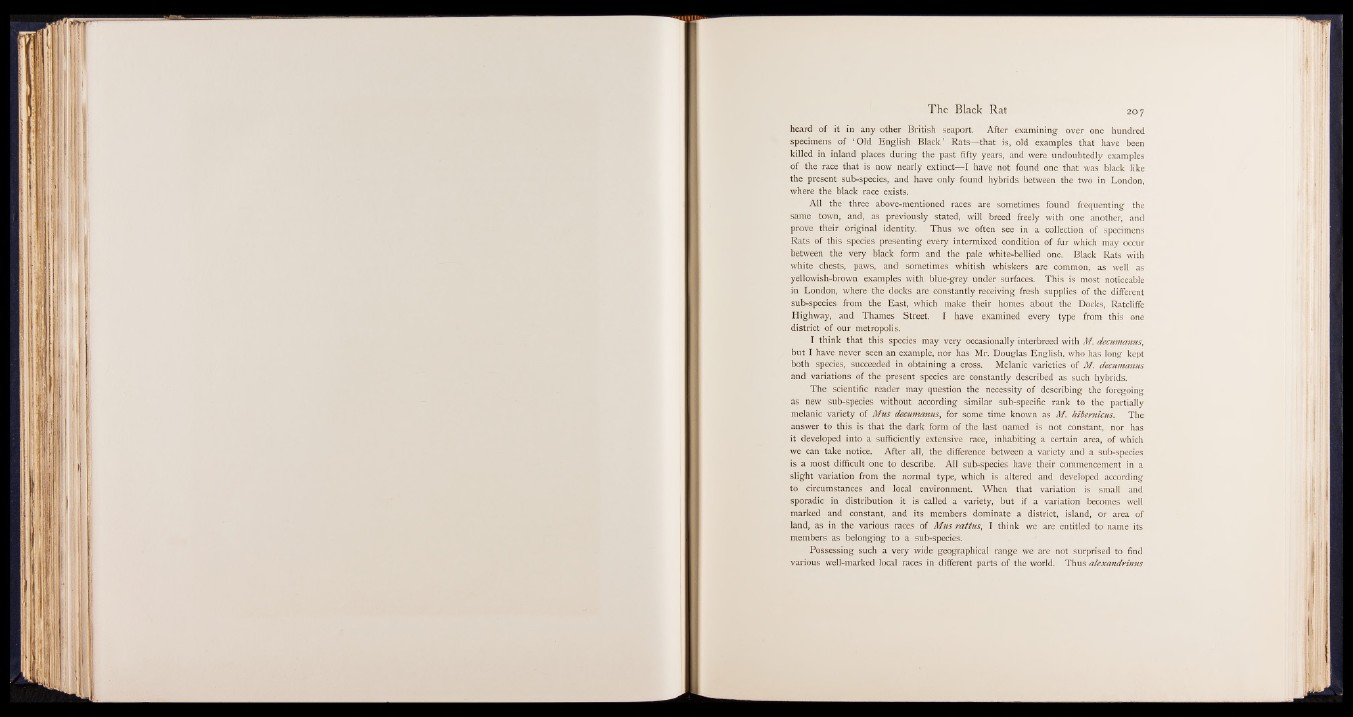
heard of it in any other British seaport. After examining over one hundred
specimens of ‘ Old English Black* Rats—that is, old examples that have been
killed in inland places during the past fifty years, and were undoubtedly examples
of the race that is now nearly extinct—I have not found one that was black like
the present sub-species, and have only found hybrids between the two in London,
where the black race exists.
All the three above-mentioned races are sometimes found frequenting the
same town, and, as previously stated, will breed freely with one another, and
prove their original identity. Thus we often see in a collection of specimens
Rats of this species presenting every intermixed condition of fur which may occur
between the very black form and the pale white-bellied one. Black Rats with
white chests, paws, and sometimes whitish whiskers are common, as well as
yellowish-brown examples with blue-grey under surfaces. This is most noticeable
in London, where the docks are constantly receiving fresh supplies of the different
sub-species from the East, which make their homes about the Docks, Ratcliffe
Highway, and Thames Street. I have examined every type from this one
district of our metropolis.
I think that this species may very occasionally interbreed with M. decumanus,
but I have never seen an example, nor has Mr. Douglas English, who has long kept
both species, succeeded in obtaining a cross. Melanie varieties of M. decumanus
and variations of the present species are constantly described as such hybrids.
The scientific reader may question the necessity of describing the foregoing
as new sub-species without according similar sub-specific rank to the partially
melanic variety of Mus decumanus, for some time known as M. hibernicus. The
answer to this is that the dark form of the last named is not constant,, nor has
it developed into a sufficiently extensive race, inhabiting a certain area, of which
we can take notice. After all, the difference between a variety and a sub-species
is a most difficult one to describe. All sub-species have their commencement in a
slight variation from the normal type, which is altered and developed according
to circumstances and local environment. When that variation is small and
sporadic in distribution it is called a variety, but if a variation becomes well
marked and constant, and its members dominate a district, island, or area of
land, as in the various races of Mus rattus, I think we are entitled to name its
members as belonging to a sub-species.
Possessing such a very wide geographical range we are not surprised to find
various well-marked local races in different parts of the world. Thus alexandrinus